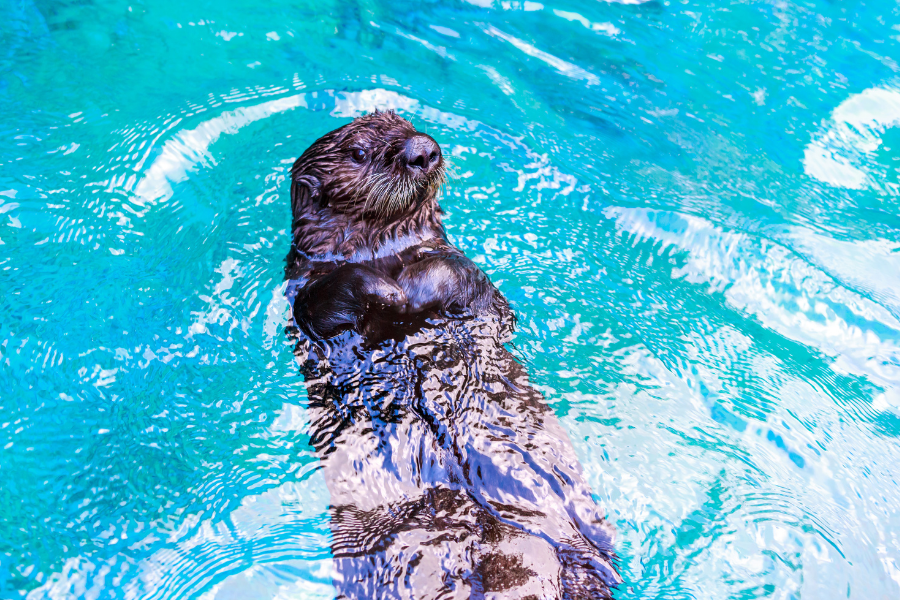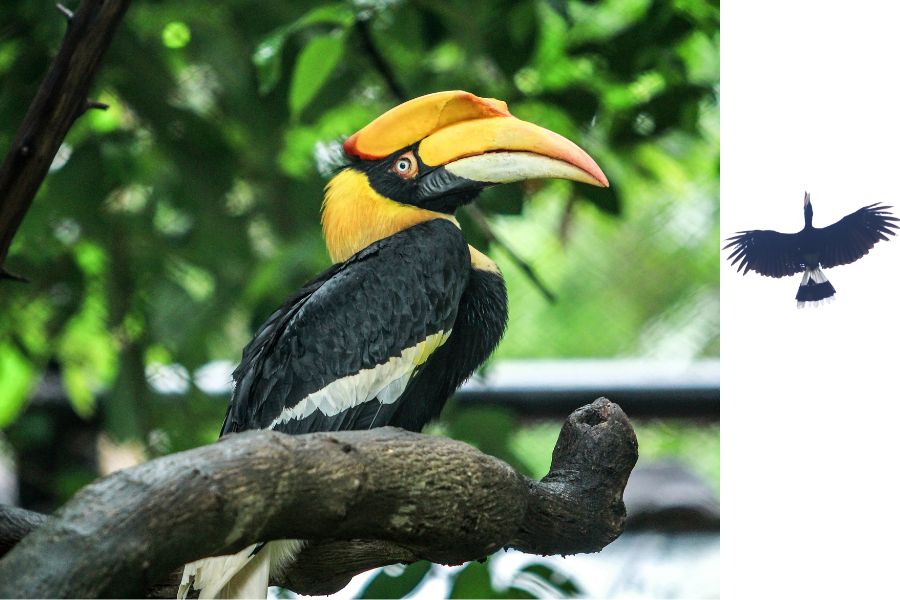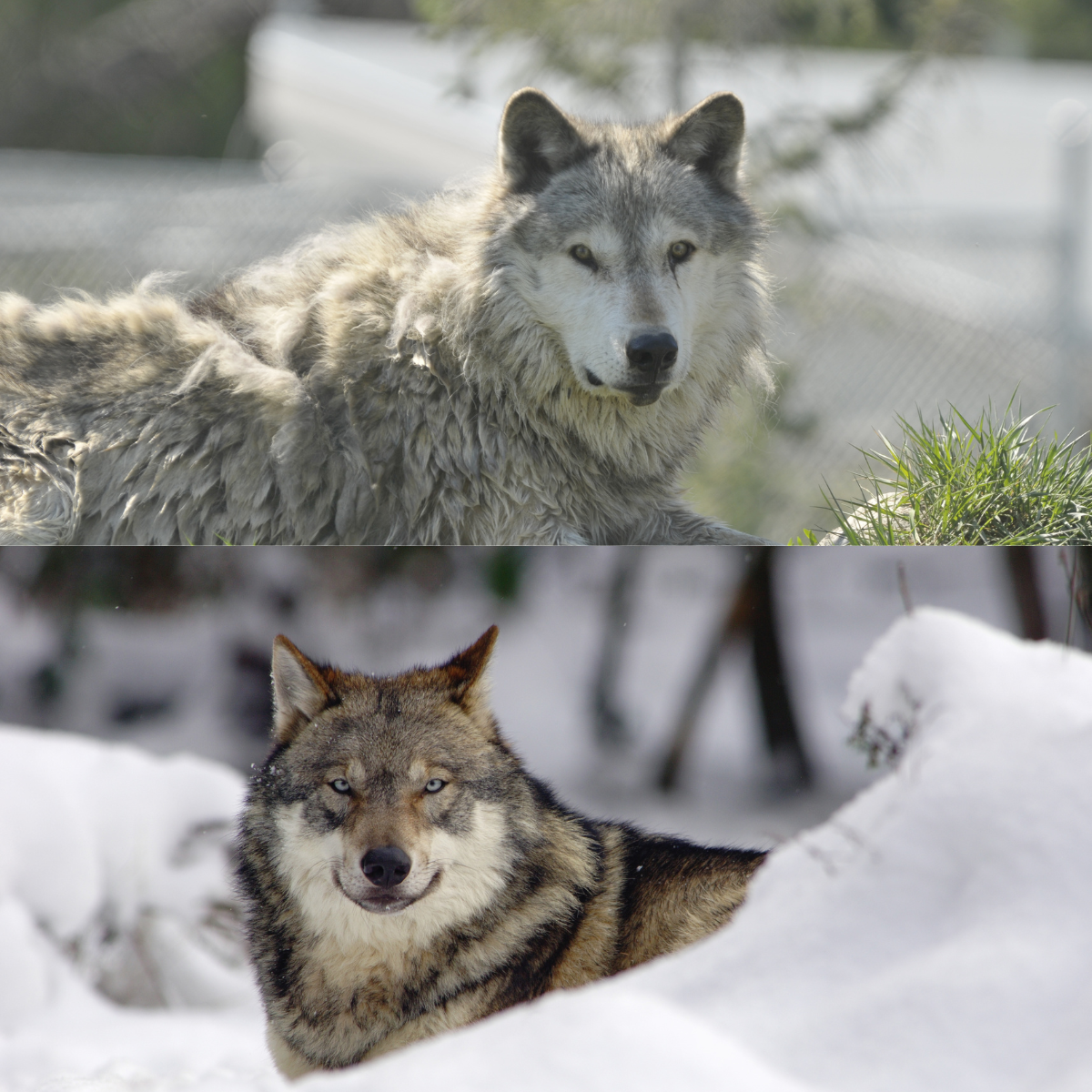October 23, 2022.
These animal climate heroes restore habitats and revive ecosystems
You might be surprised to learn just how much of our world is shaped by animals doing unremarkable things like scratching, digging, eating, and pooping. Especially pooping. These activities are the first in a chain of events that result in highly complex, bio-diverse ecosystems.
Certain species, because of their unique skills, food choices, or even size, are ecosystem linchpins—remove them from the equation, and an ecosystem collapses. Without mussels, you might not have clean drinking water. Without forest elephants, atmospheric carbon dioxide would skyrocket. And if you think an otter's appetite for sea urchin doesn't impact your life, think again.
In a world where nature works in concert to stay balanced, human-driven climate change is like a counterweight dropped from the top of a building, threatening more than one million species around the world. Humans are responsible for altering nearly 100% of Earth's land-based ecosystems, according to a 2021 study published in Frontiers in Forests and Global Change.
These changes are detrimental to ecosystems on which humankind relies. Now, animals like the beaver, which are all too easy to write off as unexceptional or unimportant from our own perspective, may be among our best hope for climate salvation. Below is a list of 10 animals from diverse environments, outlining how each helps sustain its ecosystem.

Beavers.
Beavers are revered as nature's civil engineers, a species capable of altering entire ecosystems with the dams they build. Beavers dam up moving water to create a pond where they take up residence. Upon meeting the obstruction, running water on the opposite side of the dam is diverted to the surrounding land, creating wetlands and attracting new flora and fauna to that ecosystem. While some people, especially farmers, might understandably view this freelance construction as a nuisance, it can be lifesaving in drought-prone areas.
Dams prevent water sources from running too thin and drying up completely. Wetlands created by the overflow quench dry lands that would otherwise be at risk of wildfires. They are so effective at climate-driven drought mitigation that the California Department of Fish and Wildlife has earmarked $3 million for North American beaver habitat restoration so that they may, in turn, cause more good trouble.

Freshwater mussels.
Freshwater mussels act as tiny water treatment plants filtering out pollutants like algae and bacteria from rivers and streams. A mussel bed the size of two football fields can filter up to ten million gallons of water daily—and research in Alaska demonstrates that they do, in fact, get that big. This service keeps their freshwater cohabitants healthy. Mussels themselves can also serve as aquatic ecosystems. When embedded together on the floor of rivers, streams, or lakes, they create a physical structure where good algae can flourish, and fish can feed. As water temperatures rise due to climate change, 70% of all mussels in the U.S. are at serious risk of extinction. Without freshwater mussels, humans and animals would face river pollution and significant changes to freshwater ecosystems.

Sea otters.
Sea otters are so much more than cute faces and clownish dispositions. They are essential to protecting coastal kelp forests. Adult sea otters eat up to 30% of their body weight (or 25 pounds) each day, feasting on abalone, crabs, clams, and, most importantly, sea urchins. Without sea otters to keep their population in check, urchins can decimate kelp forests, eliminating an underwater ecosystem that is an essential store of carbon dioxide where many other marine species thrive. Coastal ecosystems such as kelp forests remove carbon dioxide from the atmosphere through photosynthesis and store roughly 20 times more carbon per acre than terrestrial forests. Without sea otters, there would be no kelp; without kelp, carbon sequestration would plummet.
Armadillos.
Armadillos perform a variety of important ecological functions such as pest control, seed dispersal, and even protection for other species. Like the beaver, the giant armadillo of South America is an ecosystem engineer. The extensive burrows they dig for refuge and bug hunting are utilized by dozens of other species for warmth, foraging, and protection from predators. Even the piles of sand and dirt displaced by armadillos in their burrow excavations are put to use by other species as places to rest or sunbathe. These smaller ecosystems and the biodiversity they bring are integral to the overall health of the larger one in which they exist.

Hornbills.
Hornbills are frugivores, a species with a diet composed almost exclusively of raw fruit. Some species of hornbills grow to have a 6-foot wingspan. Their size relative to other fruit-eating birds makes them the perfect propagator of plants that bear large fruit. Without the hornbill, orchards of Canarium and Phoebe would not exist. They spread undamaged seeds through their excrement over vast distances as they fly, earning them the moniker of "farmer of the forest." A study published in the Journal of Avian Biology found that hornbill populations can disperse nearly 13,000 seeds per day over an area the size of 184 football fields. Their dispersal fosters ecological prosperity and diversity in tropical forests.

African forest elephants.
These giant forest dwellers protect their environment by destroying it—to a degree. As these massive creatures move through dense rain forests, they trample and graze on small trees and thin the vegetation that competes for resources like sunlight and water. Field researchers in the Congo Basin discovered that where forest elephants existed, trees were larger and denser. These kinds of trees are critical to the environment because they store large amounts of carbon. If forest elephants were to vanish tomorrow, 3 billion tons of carbon dioxide would be released—the equivalent output of more than 646,000 gas-powered vehicles over one year, or over 7 trillion miles driven by such vehicles. Forest elephants also help to disperse seeds throughout the forest through their excrement.

American bison.
Bison are essential to maintaining the biodiversity of America's grasslands; they do this primarily by eating. Bison create the opportunity for new flora to grow by feeding almost exclusively on grasses that out-compete most other plants for space. Their presence on grasslands doubles plant diversity, according to Konza Prairie Biological Station data. The biodiversity of plant species makes ecosystems more resistant to drought. These regions are rebounding after the species was hunted nearly to extinction by the late 1800s, slaughtered for profit, sport, and as a means to inflict harm on Native Americans who depended on bison. Bison parts could be transformed into 150 different items including food, clothing, tools, and weapons—that were essential to Native American survival on the Great Plains.
They also shape their environment by scratching. Yes, scratching. Fully-grown male bison can weigh up to 2,000 pounds; adult females can weigh up to 1,200 pounds. When they wallow, or roll on the ground to scratch an itch, their powerful bodies create depressions in the earth. These depressions create a buffer—a bunker of sorts—from the wide open plain where plant and animal species are more guarded from threats.

Gray wolves.
As climate change shortens the length and intensity of winter, gray wolves are mitigating the impacts on scavenger species like bears, coyotes, and certain large birds by increasing their food supply. Milder winters mean an increased survival rate for prey like elk due to lower metabolic exertion and fewer winter stressors, according to findings from a University of California at Berkeley study. Less snow means they won't perish from exhaustion and earlier melt means easier access to food sources. Wolves provide balance by hunting elk and leaving their remains for scavenger species to feed upon.

The world's only scaly mammal, pangolins are integral to maintaining healthy forests by dining on termites. While termites actually help maintain a healthy ecosystem by consuming dead wood and turning it into nutrient-rich organic matter called humus, an unchecked population can overrun a forest. A single pangolin can protect about 31 football fields' worth of forest from termite damage. Pangolins also keep soil healthy and aerated by digging burrows, which aids in decomposition and vegetative regrowth.
Pangolins have been hunted nearly to extinction due to myths about the medicinal and magical properties of their blood and scales, which are made of material similar to our hair and fingernails and bear no benefit to humans. In some regions of Asia, pangolin meat is a delicacy; in Africa, it is sold as bushmeat. These creatures faced additional persecution when they were erroneously named as a possible source of COVID-19.

Tapirs.
Like other heroes on this list, tapirs are frugivores. Seeds from food sources move through their digestive tract and are eventually discarded along the forest floor in their nutrient-rich waste. In this way, frugivores are essential to restoring degraded environments and increasing carbon storage. Tapirs actually prefer to feed in these degraded settings. So, by simply performing everyday functions like eating and defecating, the tapir is helping to seed and restore large swaths of its South American rainforest habitats that have been disturbed by fires and deforestation.
